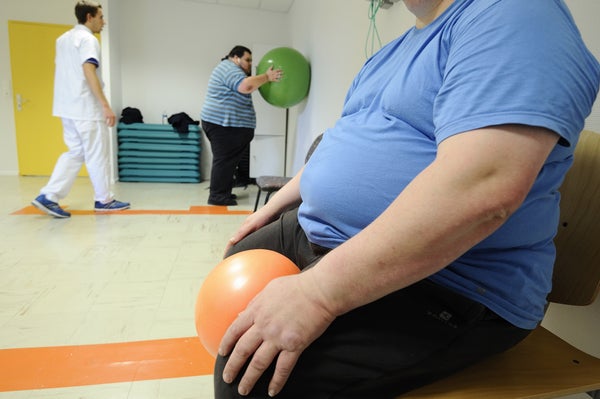A new study finds striking metabolic differences between fat cells from obese and normal weight people—but it’s not clear what the findings mean to overall health.
Why it matters:
Obesity is associated with complications like diabetes and heart disease. But over the past 15 years, evidence has emerged that a subgroup of obese people are metabolically healthy, meaning they don’t have the insulin resistance, high blood sugar, high cholesterol, and high triglycerides typical of obesity.
On supporting science journalism
If you're enjoying this article, consider supporting our award-winning journalism by subscribing. By purchasing a subscription you are helping to ensure the future of impactful stories about the discoveries and ideas shaping our world today.
That has led to questions of whether treating the obesity itself is the way to target these problems, or whether some other kind of metabolic imbalance is to blame.
The nitty gritty:
To see if there were differences in the kind of fat that obese people and normal weight people carry, scientists took fat biopsies from three groups of participants: 17 non-obese, 21 insulin-sensitive obese, and 30 insulin-resistant obese people. By looking at gene expression profiles, they wanted to discern whether the second group looked more like the first, or the third.
They found that when they dosed participants with insulin and then biopsied fat cells, the cells’ responses were almost indistinguishable in the two obese groups. While insulin changed levels of gene expression in over 200 genes in both groups of obese participants, it affected the expression just two genes in the non-obese group.
Their results were published Thursday in Cell Reports.
What they’re saying:
Gene expression can change the proteins a cell has to work with—so these findings indicate that fat cells in obese people are doing something different than fat cells in healthy people, said Dr. Mikael Rydén, an endocrinologist at the Karolinska Institute in Sweden and lead researcher in the study.
“We think that adds fuel to the debate,” he said. “It would imply that you are not protected from bad outcomes if you are a so-called fit and fat person.”
But keep in mind:
While the overall activity of genes was similar between the obese groups, some genes did differ between the two, both in whether their expression changed at all, and the magnitude of change. This very observation could negate the study as evidence against the existence of fit and fat, said Dr. Samuel Klein, a gastroenterologist specializing in nutrition at Washington University School of Medicine in Missouri.
“I don’t think this study has any bearing on that question,” he said. “Based on your ability to consume oxygen during maximal exercise, you can be obese and be fitter than someone who’s lean. And if you are fat but fit you have a lower risk of heart disease and diabetes than if you’re lean and unfit.”
Still, Klein said that the low change in gene expression in the non-obese group was “remarkable.”
“There’s really something very interesting about adipose tissue that we need to understand further,” he said.
The study also only looked at fat cells, Rydén pointed out. It doesn’t tell us how insulin might affect the function of other tissues, like kidneys and livers. Additionally all of the participants in the obese group were scheduled to have bariatric surgery, meaning the study may only apply to the severely obese and not to all obese people.
The bottom line:
Terms like “healthy obesity” and “fat but fit” may oversimplify a complicated health issue that scientists still have a lot to learn about.
Republished with permission from STAT. This article originally appeared on August 18, 2016
